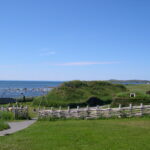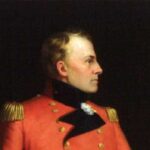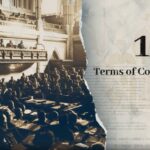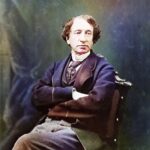BC and Confederation
Welcome to our 20 part series on British Columbia’s journey to entering Canadian Confederation.
Introduction
This series tells the story of how British Columbia evolved from a remote British outpost to a province of Canada. Beginning with the first arrivals by land and sea in 1793, it follows the founding of Fort Victoria, the 1846 Oregon Boundary Treaty, and the creation of the colonies of Vancouver Island and British Columbia. Key figures like James Douglas helped navigate the interests of the Hudson’s Bay Company and the British Crown. As gold rushes, politics, and pressure for union grew, B.C.’s entry into Confederation in 1871 marked the end of one era—and the beginning of another.
1) Status of Colony of Vancouver Island
British presence on the West Coast began in 1793 with Alexander Mackenzie’s overland journey and George Vancouver’s coastal exploration by sea. In 1843, James Douglas of the Hudson’s Bay Company founded Fort Victoria at Camosun as a northern post in anticipation of U.S. expansion. The 1846 Oregon Boundary Treaty set the border at the 49th parallel, leaving Britain with Vancouver Island. To secure this claim, Britain created the Colony of Vancouver Island in 1849, leasing it to the HBC. James Douglas, as Chief Factor, became a key figure in colonial affairs, balancing Company interests with growing ties to the British Foreign Office.
2) Gold Rush
In 1858, the discovery of gold on the Fraser River triggered a massive influx of prospectors, with over 30,000 people—mainly Americans—flooding into the mainland in search of fortune. This sudden rush transformed the demographic makeup of the region, introducing not only white miners but also Black settlers fleeing discrimination in California and significant numbers of Chinese migrants seeking opportunity. Alarmed by the potential for American annexation and lawlessness, Governor James Douglas quickly moved to assert British authority by dispatching magistrates, forming a small constabulary, and requiring mining licenses. The British Foreign Office, equally concerned, responded by formally establishing the mainland as the Colony of British Columbia in August 1858, ensuring the territory remained firmly under British control amid growing external pressures.
3) Formation of the Colony of British Columbia
The Colony of British Columbia was formed in 1858 to assert British control during the Fraser River Gold Rush, with New Westminster chosen as the capital for its defensible location. The Royal Engineers helped build roads and lay out towns, enforcing order in the rapidly growing colony. James Douglas, already Governor of Vancouver Island, was appointed governor of both colonies after cutting ties with the Hudson’s Bay Company. He focused on road building, like the Cariboo Road, but struggled with limited budgets. Judge Matthew Begbie enforced British law, often harshly. The influx of settlers disrupted Indigenous communities, leading to displacement and rising tensions.
4) Amalgamation of Colonies
After James Douglas retired in 1864, Arthur Kennedy became Governor of Vancouver Island and Frederick Seymour took over the mainland colony. During this time, the Cariboo Gold Rush peaked, with Billy Barker’s gold strike leading to the rise of Barkerville and deep-shaft mining. Kennedy and Seymour struggled with debt and growing challenges. The British Foreign Office, seeking efficiency and cost-saving, pushed to merge the two colonies. Though Seymour resisted, his visit to Britain in 1866 confirmed the decision, and the colonies were united as British Columbia, with Victoria as the capital.
5) Local Politics
By the mid-1800s, Victoria was a small HBC-led settlement with British, Métis, and settler communities focused on trade and stability. Mainland politics were looser, shaped by miners and American influence. The Crimean War boosted Esquimalt’s naval role and Victoria’s economy. The 1846 Oregon Boundary Treaty gave Britain Vancouver Island, leading to the colony’s creation in 1849 under HBC control. James Douglas, as Chief Factor, managed both commercial and colonial affairs, developing a closer relationship with the Foreign Office as British concerns over U.S. expansion grew.
6) Canada Confederation
In the 1860s, political stalemate in the Province of Canada pushed leaders like John A. Macdonald and George-Étienne Cartier to pursue a broader union. Fears of American expansion under the idea of Manifest Destiny, combined with tensions from the U.S. Civil War, made British North American leaders and the British Foreign Office wary of future conflict. Determined to avoid war and reduce imperial costs, Britain encouraged its colonial governors to support Confederation. Macdonald and Cartier emerged as key architects, leading talks in Charlottetown, Quebec City, and London. These conferences laid the foundation for the new Dominion of Canada, officially formed on July 1st, 1867.
7) Three Options for British Columbia
Between 1866 and 1870, British Columbia was broke, isolated, and uncertain about its future. The gold rush had ended, debt was high, and American influence was growing—especially after the U.S. bought Alaska in 1867. Some in B.C. favoured joining the U.S., while others debated staying a colony or forming an independent state. The Canadian option, with promises of financial support and a transcontinental railway, began to look like the best path forward.
8) Continued colony or Independence
The British arrived on the West Coast in 1793, with Vancouver by sea and Mackenzie overland. After the 1846 Oregon Boundary Treaty, Britain retained Vancouver Island and later established it as a colony in 1849 under the Hudson’s Bay Company. James Douglas led colonial affairs, balancing HBC interests with British oversight. By the late 1860s, the mainland Colony of British Columbia faced a crossroads: burdened by debt and isolation, it debated remaining a struggling British colony, forming an independent Pacific nation, or joining the new Canadian Confederation. With British support fading, independence was risky—making union with Canada the most practical choice.
9) Annexation to US
After the U.S. Civil War, America had the world’s largest standing army and growing influence in the Pacific. San Francisco dominated trade with British Columbia, and the 1867 U.S. purchase of Alaska left B.C. isolated between American territories. Some American miners, businessmen, and allies in B.C. pushed for annexation, and in 1869 a petition was sent to Washington, though it gained little traction. Fearing U.S. influence, Britain avoided granting B.C. responsible government, worried it could steer the colony toward joining the United States.
10) Confederation with Canada
By the late 1860s, British Columbia faced debt, isolation, and uncertainty. With little support from Britain and rising American influence, joining Canada became a serious option. The promise of a transcontinental railway, financial aid, and a stronger political future made Confederation increasingly attractive. For many, it was the most practical path forward.
11) Seward’s visit and Alaska
William H. Seward was the U.S. Secretary of State who pushed for the 1867 purchase of Alaska from Russia, seeing it as a key step in fulfilling America’s Manifest Destiny to dominate the Pacific coast. When visiting Victoria in 1869, he was warmly welcomed and used the opportunity to hint at American interest in British Columbia. His presence, along with growing U.S. influence, stirred fears that annexation might follow, especially as many believed the U.S. aimed to extend its reach northward.
12) Yale Convention
The Yale Convention, held in 1868, was a pivotal meeting where 26 delegates from across British Columbia gathered to discuss the colony’s future. With the economy struggling and isolation growing, the convention focused on the possibility of joining Confederation. Most delegates, including influential figures from the interior like Joseph Trutch and Dr. John Sebastian Helmcken, supported union with Canada—provided it came with guarantees like a railway and financial support. Earlier, in Barkerville, miners and residents also held meetings expressing support for Confederation, reflecting a growing grassroots push for change. Together, these gatherings helped set the stage for B.C.’s eventual entry into Canada in 1871.
13) Governor Seymour
Governor Frederick Seymour was appointed in 1864 to lead British Columbia after James Douglas. Though experienced, he struggled with debt and declining gold revenues. Seymour preferred the colony stay British and was hesitant about joining Canada or becoming independent. The Foreign Office urged him to support Confederation, but he resisted. He died of dysentery in 1869 while on official travel, leaving the Confederation decision to others.
14) Foreign Office Pressure
The Trent Affair nearly triggered war with the U.S., prompting the British Foreign Office to rethink its colonial commitments. Keen to avoid conflict and reduce costs, the Foreign Office began urging its North American colonies—especially British Columbia—to become more self-sufficient or join Canada. It discouraged funding colonial needs like Indigenous land claims and pressured governors, including Mulgrave, to support Confederation as a way to transfer responsibility and avoid future military entanglements with the U.S.
15) New Governor & Change of Course Musgrave
Governor Anthony Musgrave was appointed in 1869 to bring British Columbia into Confederation, following orders from the British Foreign Office. With experience guiding Newfoundland toward union, he strongly supported joining Canada. To make it realistic, Musgrave helped negotiate the transfer of Hudson’s Bay Company lands to Canada—a key step in the process. He then encouraged debate in the colonial legislature, pushing members to see Confederation as the only practical solution to the colony’s financial and political troubles.
16) The Great Debate
The Confederation debate was held on Wednesday, March 9th, 1870, in the “Birdcages,” the colonial legislature buildings in Victoria. Key figures included Dr. John Helmcken, who was cautious about union and feared losing local control, and Amor De Cosmos, a passionate supporter of Confederation. The debate was lively, reflecting the colony’s divisions. Delegates were chosen by the legislature to represent British Columbia in negotiations with Canada. Their task was to demand favorable terms—most importantly, a transcontinental railway, debt relief, and continued public services—to make joining Canada worthwhile for the colony.
17) Meeting with Canada
In June 1870, B.C. delegates Helmcken, Trutch, and Carrall met with Prime Minister Macdonald in Ottawa to negotiate Confederation terms. They secured key promises: a transcontinental railway within ten years, federal assumption of B.C.’s debt, and annual subsidies. With these generous terms agreed, the path was clear for B.C. to join Canada, officially becoming a province on July 20, 1871.
18) Terms of Confederation
The terms of union between British Columbia and Canada were finalized in 1870 and formed the basis for B.C.’s entry into Confederation. Key among them was Canada’s promise to build a transcontinental railway within ten years to connect B.C. to the rest of the country. Canada also agreed to take on the colony’s debt, provide an annual subsidy based on population, and maintain existing public services. These generous terms addressed B.C.’s isolation and financial troubles, making union both practical and appealing. The agreement paved the way for B.C. to officially join Canada on July 20, 1871.
19) The Deal is done
In July 1870, after the delegates returned from Ottawa, the British Columbia colonial legislature met to debate the proposed terms of union with Canada. The terms—especially the promise of a railway, debt relief, and financial support—won over many who had been undecided. While some, like Dr. John Helmcken, remained cautious, the growing consensus was that Confederation offered the best future for the struggling colony. After days of debate, the legislature voted in favour of the terms. This approval cleared the way for British Columbia to officially join Canada, which it did on July 20, 1871.
20) “July 20th, 1871”
On July 20, 1871, British Columbia officially became the sixth province of Canada. The union was marked by celebrations in Victoria, including the firing of cannons, public gatherings, and official proclamations. The long process of negotiation and debate had culminated in a deal that promised connection to the rest of the country through a transcontinental railway, financial support, and full provincial status. For many, it was a hopeful new beginning, linking the isolated Pacific colony to a growing Canadian nation. Though challenges remained, July 20 marked the moment B.C. became part of Confederation—and Canada became a nation from sea to sea.
1A) Additional Feature – Indigenous View
British Columbia’s entry into Canadian Confederation in 1871 was a turning point in the nation’s development, extending Canada’s reach to the Pacific and strengthening its position against American expansion. The promise of a transcontinental railway—central to BC’s decision—spurred major infrastructure growth and national integration. However, as historian Dr. Ken Coates highlights, this expansion came at a steep cost to Indigenous peoples, accelerating land loss, displacement, and the imposition of colonial governance. BC’s union with Canada was both a bold step in nation-building and a moment that deepened the contradictions between federal ambitions and Indigenous rights.
1B) Additional Feature – Fort Langley
Fort Langley, established by the Hudson’s Bay Company in 1827, played a foundational role in the early history of British Columbia. Located on the Fraser River, it served as a vital fur trading post and gateway between the interior and coastal regions. In the mid-1800s, Fort Langley became a hub of colonial activity, especially during the Fraser River Gold Rush of 1858, when it acted as a key supply and administrative centre. Its strategic location and economic importance made it the site where, in November 1858, the Crown Colony of British Columbia was officially proclaimed. As such, Fort Langley is often considered the “Birthplace of British Columbia,” symbolizing the region’s transition from fur trade territory to a formal British colony and eventually to a province within Canada.




























